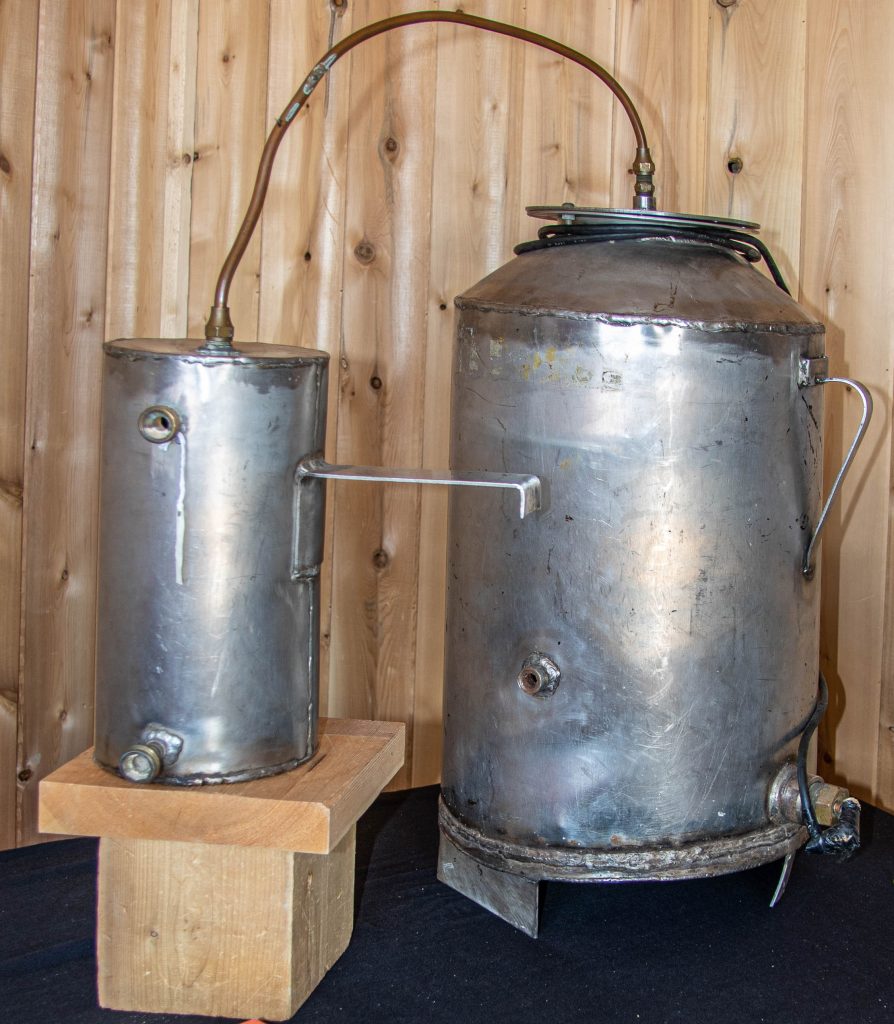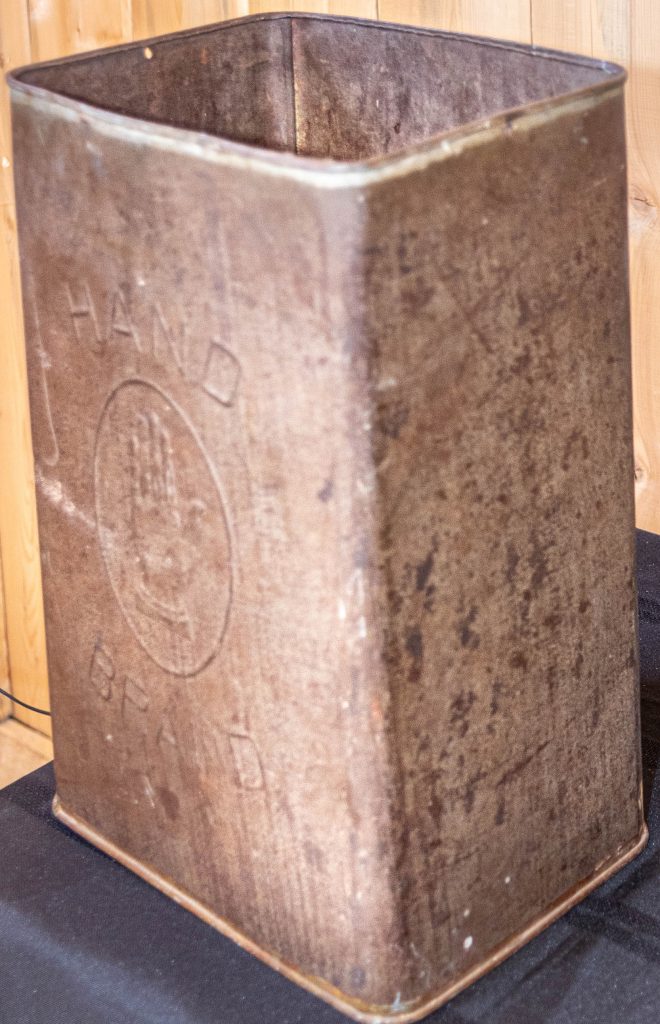Moonshine
During the smuggling era, two types of alcohol were available: moonshine, i.e. homemade alcohol, and alcohol from Saint-Pierre and Miquelon. As the alcohol from St.-Pierre and Miquelon sold at a fairly high price, the trend to make one’s own drink became more widespread. It was therefore common to own a still even if you were not a smuggler.
Alcohol produced in this way could have different names. “Bagosse” was the name most used in Témiscouata. It was made from natural ingredients such as potatoes, apples, raisins, sugar or molasses, water and yeast. During the 1920s, sales of molasses jumped by 75%. The sale of homemade alcohol was illegal, however, because bad moonshine could cause blindness or even death. On this subject, Professor H.-M. Nagant of the Oka Agricultural Institute pointed out in one of his articles reproduced in Le Madawaska, that with this type of drink, it’s a fine line between ethyl alcohol, which has the gift of gladdening men’s hearts, and methyl alcohol, which is poisonous to the body. What’s more, the moonshine was prepared in makeshift stills, clandestine distilleries that were not always safe. Notably, several accidents recorded at that time were caused by explosions, although none of them were directly linked to Alfred Lévesque’s business, despite the impressive size of his facilities.
According to some accounts, Alfred had also used wood alcohol that was sold in Boston pharmacies, and which was then redistilled at the home of his father-in-law, Pierre Collin, in Saint-Hilaire, N.B. Alfred increasingly began to obtain his supplies in Saint-Pierre-and-Miquelon. Although he had access to high quality alcohol, apparently he bought mainly Hand Brand.



